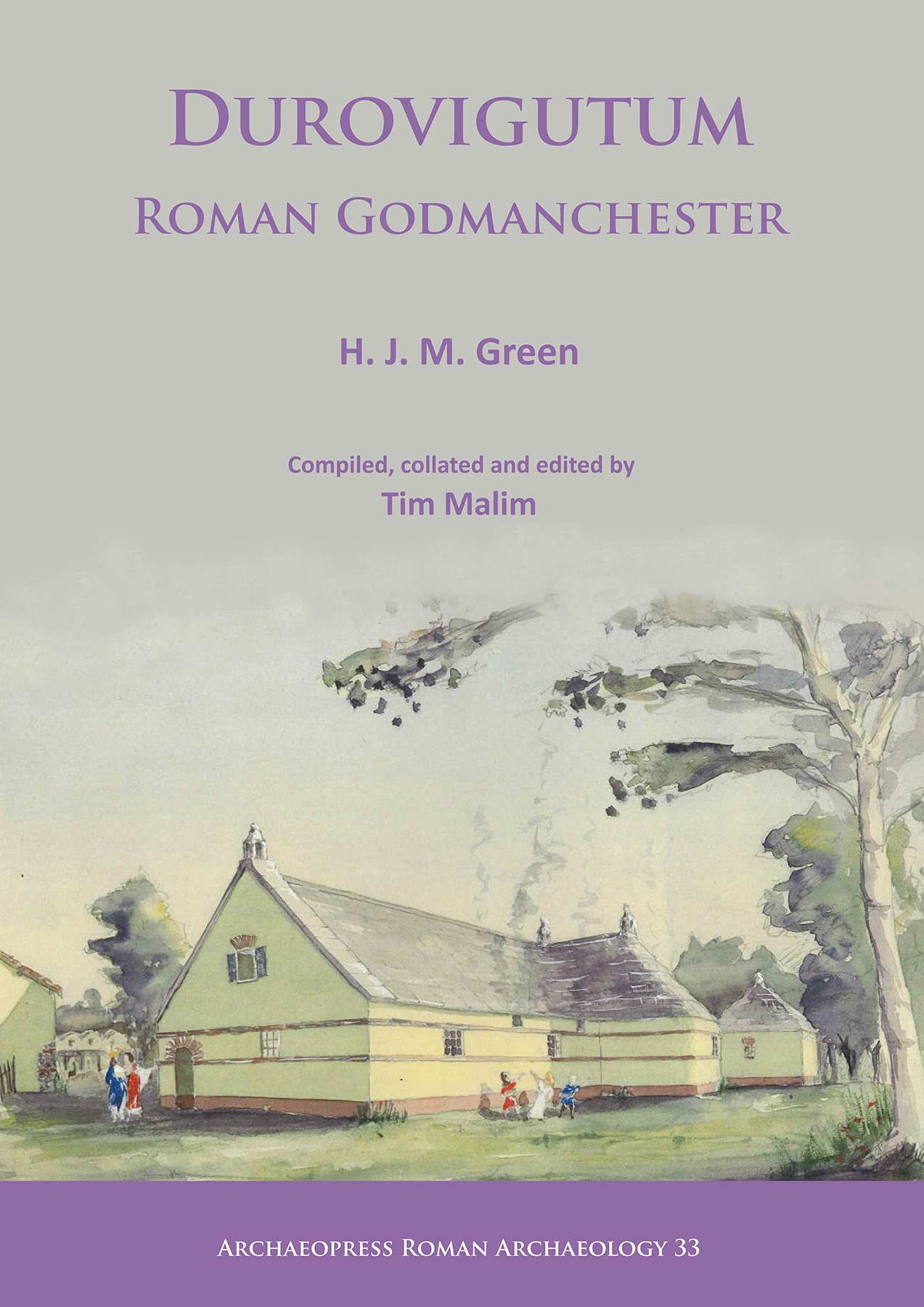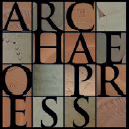
Publishing Scholarly Archaeology since 1997

Download Sample PDF
H 290 x W 205 mm
484 pages
Illustrated throughout in colour and black & white (67 colour plates)
Published Jan 2018
ISBN
Paperback: 9781784917500
Digital: 9781784917517
Keywords
Durovigutum; Godmanchester; Huntingdonshire; Cambridgeshire; Archaeology; Excavations; Roman; Mansio; Romano-British; Community archaeology; Archive
Archaeopress Roman Archaeology 33
Durovigutum: Roman Godmanchester
Prepared for publication by Tim Malim
Paperback
£50.00
Includes PDF
PDF eBook
(personal use)
£16.00
PDF eBook
(institutional use)
£50.00
This publication presents Michael Green’s archaeological investigations into Roman Godmanchester (Cambridgeshire, UK). This is the first time Green’s full body of work has been collated and presented in one comprehensive volume.
Contents
Preface ;
Foreword ;
PART 1 EXCAVATIONS AT DUROVIGUTUM ROMAN GODMANCHESTER ;
Chapter 1 Introduction ;
Chapter 2 Chronological and Thematic Summary of the Town ;
Chapter 3 The forts, road network, and town development ;
Chapter 4 Public Buildings and cemeteries ;
Chapter 5 The Town: The Economic Base ;
Chapter 6 The Economic Basis of the Rural Hinterland ;
Chapter 7 Domestic Buildings and continuation into Anglo-Saxon times ;
PART 2 SPECIALIST STUDIES ;
Chapter 8 Samian, coarse pottery, kiln and catalogues ;
Chapter 9 Mortaria and lamps ;
Chapter 10 Faunal remains ;
Chapter 11 Coins, special assemblages and slag ;
PART 3 APPENDICES ;
Appendix 1 Site reports arranged chronologically by excavation date ;
Appendix 2 Collected Publications on Roman Godmanchester ;
Appendix 3 Small Finds Catalogue and Drawings ;
Bibliography
About the Author
Michael Green was born in St Ives, Huntingdonshire, in 1931. His father was a dentist, a WW1 flying ace and a Colonel in the Northamptonshire Regiment, who died in action with the BEF at Ypres in 1940. Michael was brought up by his mother, going to King’s College Choir School, Felsted, before training as an architect and starting his excavations in Godmanchester in 1951. He joined the Ministry of Works in the early 1950s and was made a Senior Investigator of Historic Buildings at the Department of the Environment, before later becoming an Inspector of Ancient Monuments and Historic Buildings. He undertook rescue excavations at Whitehall Palace between 1960-62 for the Ministry of Works and London Museum, and helped in the redesign of the Jewel Tower on College Green opposite the Houses of Parliament. In 1990 he was a founding member and President of the Centre for Crop Circle Studies which sought a more systematic approach to understanding these phenomena, and he published many articles in the cerealogist. He was a frequent contributor to various magazines and journals, including the Illustrated London News, The Archaeological News Letter, and the Proceedings of the Cambridge Antiquarian Society, a society of which he was elected President for two successive terms 1980-85. He is a Chartered Member of the Royal Institute of British Architects and a Fellow of the Society of Antiquaries of London. In 2008 he published a definitive history of Clapham, where he has lived for some 30 years; Tim Malim graduated from the Institute of Archaeology, London in 1980 and is a Fellow of the Society of Antiquaries and Member of the Chartered Institute for Archaeologists, as well as Chair of the Federation of Archaeological Managers and Employers. He has conducted research in Chile, Peru, Sri Lanka and continental Europe, as well as the UK where his present role is Technical Director at SLR Consulting in Shrewsbury. In the 1980s and 1990s Tim was based in Cambridge, first with The Fenland Survey, and later he founded and then directed the Archaeological Field Unit of Cambridgeshire County Council, investigating and publishing many important sites including a synthesis volume on Stonea and the Roman Fens in 2005.Reviews
‘…[It] is impossible not to be in awe of Green’s commitment to Roman Godmanchester and we have cause to be grateful to Tim Malim for bringing the volume together. As a result of this publication we are undoubtedly better informed about this important site, but it is also clear that much potential remains to be realized from the sites and material presented (or not) in the volume – a mine for postgraduate dissertations and theses perhaps?’ – Pete Wilson (2019): Archaeological Journal, DOI: 10.1080/00665983.2018.1555125

 Add to wishlist
Add to wishlist
